SEMESTER 2
AAM201
CRITICAL CONTEXTUAL STUDIES & RESEARCH METHODS
AAM201
CRITICAL CONTEXTUAL STUDIES & RESEARCH METHODS
Proposal
I will be researching interaction between the body and design objects through 3D visualisation, animation and fabrication techniques. Inspired by the ethos of the Vienna Secessions ‘gesamtkunstwerk’ I will investigate the potential for embodied experience with everyday design objects and interactive environments. I will create interactive virtual compositions that will be translated into functional design objects and installed space.
My project outcome will be initially guided by experimentation with 3D software to create digital compositions that reference geometry and biomorphism. These compositions will explore material, texture, light, form and space. Later iterations will consider these elements in relation to the body through being fabricated into conceptual furniture designs using 3D printing techniques and casting. This production process will evaluate sustainable materials, methods of production and haptics.
-
Profile
I am an interdsiciplinary artist, designer and DJ based in Aberdeen. As a graduate artist I have curated, planned and delivered exhibitions. My most recent shows including Royal Scottish Academy, New Contemporaries and the Scottish Society of Artists.
My creative practice combines digital media, sculpture and sound in an installed space. I translate sound and digital image into physical space to create mindfulness and a bodily awareness for participants.
-
Email
CV
Instagram
Vimeo
Soundcloud
I will be researching interaction between the body and design objects through 3D visualisation, animation and fabrication techniques. Inspired by the ethos of the Vienna Secessions ‘gesamtkunstwerk’ I will investigate the potential for embodied experience with everyday design objects and interactive environments. I will create interactive virtual compositions that will be translated into functional design objects and installed space.
My project outcome will be initially guided by experimentation with 3D software to create digital compositions that reference geometry and biomorphism. These compositions will explore material, texture, light, form and space. Later iterations will consider these elements in relation to the body through being fabricated into conceptual furniture designs using 3D printing techniques and casting. This production process will evaluate sustainable materials, methods of production and haptics.
-
Profile
I am an interdsiciplinary artist, designer and DJ based in Aberdeen. As a graduate artist I have curated, planned and delivered exhibitions. My most recent shows including Royal Scottish Academy, New Contemporaries and the Scottish Society of Artists.
My creative practice combines digital media, sculpture and sound in an installed space. I translate sound and digital image into physical space to create mindfulness and a bodily awareness for participants.
-
CV
Vimeo
Soundcloud
SEMINAR 7
Jon Pengelly
New Usership Models & the Digital Commons
New Usership Models & the Digital Commons
Content
In this seminar we were tasked with choosing excerpts from Toward a Lexicon of Usership by Stephen Wright to read and discuss. I chose Deactivate (Arts Aesthetic Function) and Expertise.
Deactivate (Arts Aesthetic Function)
This chapter looks at the shift from art as a purely aesthetic form to a field in which a multitude of purpose is operating towards a wider enquiry of social domains. This shift correlates with the change in the consumer behaviour as a service and user-based market. Data is becoming the most valuable resource, companies are selling and buying information that bread trails the daily interactions of users. These bread trails allow corporate interest groups to guide and manipulate the direction of user interaction, this is justified under the guise of service and product improvement. I think there is a potential to shift this into something positive as creative practitioners.
Expertise – still requires the data expert, why and how the data is being gathered is not impartial. The trend of usership relates to the wider economic framing of late-stage capitalism.
“Usership represents a still more deep-seated challenge to ownership in
an economy where surplus-value extraction is increasingly focused
on use: how long will communities of use sit by as their
user-generated content value, rather than being remunerated,
is expropriated and privatised? “
Ludwig Wittgensteins user based theory of meaning, argues that stability is predicated on usership. If communities of users changed their usership of a system, the system would either collapse or change. Wittgenstein refers to language in this argument, which is just another technology, a truth often overlooked due to it being one of the earliest technological developments in human history.
Moving from product to experience and story.
Personal Reflection
I am particularly interested in usership as much of my art utilises digital technologies and is often interactive. Usership is inherent to digital technologies, and with each shift in technology is also a shift in not only the nature of usership itself but also the intellectual framing of the user. This realtionship questions the extent to which we are shaped by the things we create. Many of these considerations influence my thinking.
In this seminar we were tasked with choosing excerpts from Toward a Lexicon of Usership by Stephen Wright to read and discuss. I chose Deactivate (Arts Aesthetic Function) and Expertise.
Deactivate (Arts Aesthetic Function)
This chapter looks at the shift from art as a purely aesthetic form to a field in which a multitude of purpose is operating towards a wider enquiry of social domains. This shift correlates with the change in the consumer behaviour as a service and user-based market. Data is becoming the most valuable resource, companies are selling and buying information that bread trails the daily interactions of users. These bread trails allow corporate interest groups to guide and manipulate the direction of user interaction, this is justified under the guise of service and product improvement. I think there is a potential to shift this into something positive as creative practitioners.
Expertise – still requires the data expert, why and how the data is being gathered is not impartial. The trend of usership relates to the wider economic framing of late-stage capitalism.
“Usership represents a still more deep-seated challenge to ownership in
an economy where surplus-value extraction is increasingly focused
on use: how long will communities of use sit by as their
user-generated content value, rather than being remunerated,
is expropriated and privatised? “
Ludwig Wittgensteins user based theory of meaning, argues that stability is predicated on usership. If communities of users changed their usership of a system, the system would either collapse or change. Wittgenstein refers to language in this argument, which is just another technology, a truth often overlooked due to it being one of the earliest technological developments in human history.
Moving from product to experience and story.
Personal Reflection
I am particularly interested in usership as much of my art utilises digital technologies and is often interactive. Usership is inherent to digital technologies, and with each shift in technology is also a shift in not only the nature of usership itself but also the intellectual framing of the user. This realtionship questions the extent to which we are shaped by the things we create. Many of these considerations influence my thinking.
SEMINAR 8
Chris Freemantle
Creative failure
Creative failure
Content
This seminar focused on discussing the definition and connotations of failure. The format of the seminar was mostly an open discussion on our experiences and interpretations of failure as creatives and as people.
On listening to Elizabeth Reeder’s lecture on failure I reflected on my ingrained fear of failure. One that has at times prohibited or stifled my creative practice. Reeder speaks on the binary framing of failure, there being a notion that failure is often followed by success. I believe this to be part of the western cultural narrative, informed by films and media, that incentivises dream chasing. In a particular period of time in America this would have been known as the “American dream” it prevails now in a more covert but still as pernicious way. The pursuit of success is very lucrative for those who sell the dreams and repeat the mantras that failure will only eventually lead to success, albeit a very narrow and superficial idea of success, and any acceptance of anything less makes you a loser. Capitalism is predicated on creating a wealth of “losers” and a minority of winners. Often these winners sell their rag to riches tales that can be revealed as complete fabrication on even a cursory inspection.
Personal Reflection
I really enjoyed the not only the seminar itself but also reviewing the preparatory materials for this seminar. Unpicking the meaning of failure on both a subjective and wider cultural interpretation. This seminar was quite emotionally charged, it tapped into some very base and personal experiences, failure is something everyone can relate to. Each of us for the totality of our lives are engaged in a series of judgements, many of which result in failure.
Failure takes place in every facet of our lives, often we think of failure in terms of success and the term success in our society is completely tied to financial prosperity. I believe this is a direct consequence of capitalism, that success is viewed in such narrow terms. Rarely do we think of success in moralistic terms, success in our relationships or cohesion in our community. This can even be illustrated by the way in which our governmental body measures success on a national level, GDP or Gross Domestic Product. GDP is a monetary measure of the market value of goods and services produced. Even in surveys done to measure happiness on a nation-by-nation basis, happiness was grossly substantiated by GDP factor. On reviewing these surveys, it is a reasonable supposition that there may be a political slant that favours “developed” nations over the developing. In my opinion this is because the ultimate aim of capital is to import product and services globally, and it is more enriching to widen the market by incentivising this model to “developing” nations. We can see this as more of the “developing” world is being used as stopover for capital, one such place being used currently is southeast Asia.
This seminar focused on discussing the definition and connotations of failure. The format of the seminar was mostly an open discussion on our experiences and interpretations of failure as creatives and as people.
On listening to Elizabeth Reeder’s lecture on failure I reflected on my ingrained fear of failure. One that has at times prohibited or stifled my creative practice. Reeder speaks on the binary framing of failure, there being a notion that failure is often followed by success. I believe this to be part of the western cultural narrative, informed by films and media, that incentivises dream chasing. In a particular period of time in America this would have been known as the “American dream” it prevails now in a more covert but still as pernicious way. The pursuit of success is very lucrative for those who sell the dreams and repeat the mantras that failure will only eventually lead to success, albeit a very narrow and superficial idea of success, and any acceptance of anything less makes you a loser. Capitalism is predicated on creating a wealth of “losers” and a minority of winners. Often these winners sell their rag to riches tales that can be revealed as complete fabrication on even a cursory inspection.
Personal Reflection
I really enjoyed the not only the seminar itself but also reviewing the preparatory materials for this seminar. Unpicking the meaning of failure on both a subjective and wider cultural interpretation. This seminar was quite emotionally charged, it tapped into some very base and personal experiences, failure is something everyone can relate to. Each of us for the totality of our lives are engaged in a series of judgements, many of which result in failure.
Failure takes place in every facet of our lives, often we think of failure in terms of success and the term success in our society is completely tied to financial prosperity. I believe this is a direct consequence of capitalism, that success is viewed in such narrow terms. Rarely do we think of success in moralistic terms, success in our relationships or cohesion in our community. This can even be illustrated by the way in which our governmental body measures success on a national level, GDP or Gross Domestic Product. GDP is a monetary measure of the market value of goods and services produced. Even in surveys done to measure happiness on a nation-by-nation basis, happiness was grossly substantiated by GDP factor. On reviewing these surveys, it is a reasonable supposition that there may be a political slant that favours “developed” nations over the developing. In my opinion this is because the ultimate aim of capital is to import product and services globally, and it is more enriching to widen the market by incentivising this model to “developing” nations. We can see this as more of the “developing” world is being used as stopover for capital, one such place being used currently is southeast Asia.

SEMINAR 9
Group Crit
Digital Tools v Digital Language
Digital Tools v Digital Language
Content
Members of the class were asked to present their work in relation to the topic of digital art or to discuss an idea or work that interested them on this basis. I was one of those requested to volunteer.
The basis of this seminar was to discuss the topic of digital art and the wider cultural context surrounding it as a practice and a theme. Jon started with a presentation that mapped the history of digital arts, from early machine art to net art and more recently post-internet art. All of these progressions were subject to shifts in not only the technology itself but the way in which interaction would be formed.
One of the main take-aways from what was discussed on this seminar is that the idea that digital art or design can viewed in isolation as a cultural phenomenon is a poor analysis on the subject. This due to multitude of factors, one being that usership is inherent to digital models.
In discussion we established the relationship between technology and user as a complex and dynamic one, with each influencing the other similar to a form of feedback loop. As a class we discussed the themes that immediately came to each of us individually on considering the task, but as the discussion progressed certain shared themes arose. The discussion was not only quantifying the practical merit of digital technologies but unavoidably veered into emotive and humanistic territories. Feelings ranged from positive to negative but mostly the feedback was a response of ambivalence.
Personal Reflection
In my own presentation I hovered between these territories of ambivalence towards digital technologies, and even technology as a whole. I have spent much of my adolescence and adult life immersed in digital media, my art and design practices utilise digital tools extensively. I am completely reliant on digital technologies in many ways yet with age my criticalness of it has markedly increased. I find this contradiction or as some might see as inconsistency a point on tension.
*Presentation transcipt*
Digital Themes and Practice in Art
From an early age I was fascinated by computers. Something about my temperament has always attracted me to activities that engage that engage archival qualities. The ability to categorise and signpost cultures of past, present and potential futures complements an innate pattern recognition.
I was engaged with digital culture long before I became aware of digital artists. During my undergraduate I read a really informative book Arts and Electronic Media by Edward A Shanken
Digital Art Paradigm
In my presentation I formulated a paradigm of digital art that maps out an axis of themes and production. Each end point feeds back into the other. The themes I pinpoint speak to some of the conversations that are arising within digital cultures, many of which are revaluating the implications of the technologized society.
Digital culture and aesthetic
Part 1.
The creator of the Nyan Cat gif just celebrated its 10th anniversary by selling a digital asset known as an Non Fungible Token. It sold for 300ETH ( $561,000) This is a great example of popular art or culture being appropriated into a collectable object for the elite culture industry. Similar to the early street art movement, meme culture emerged as popular art form that reacted against its cultural climate and now is also being displaced into an elite art context by art dealers and gallerists.
Part 2.
This meme uses the format of the political compass meme but breaks its function. Each ideological axis posits an outcome of industrial society with no moderate variation. The potential futures determined by this axis are a reaction against technology and industrial society. I am particularly interested in this kind of tension within digital cultures, in which the medium is opposed by its message.
Digital Artists
Mariko Mori, Nirvana (1997)
Mori’s work juxtaposes western and eastern reference points to create digital landscapes that elevate discussions around transcendence, death and spirituality. Her hybridisation of cultures and histories to create alternate futures reflects the homogenous nature of digital technologies at that point.
Iain Ball, Terbium (2015)
This work is part of his “Rare Earth Pangea Series”. Each sculpture in this series is names after one of the seventeen rare earth minerals that exist, this one being Terbium. Ball’s sculptures are elements within wider sculptural networks as he calls them. This sculpture co-exists with accompanying works that inhabit both material and immaterial space, such as experimental web pages, sound and installation. New age culture combined with corporate aesthetic works
Jon Rafman, Nine Eyes of Google street view (2008)
An archival project and conceptual meditation on the state of photography in a time of automated imagemaking. Photo series of screenshots of google street view.
Members of the class were asked to present their work in relation to the topic of digital art or to discuss an idea or work that interested them on this basis. I was one of those requested to volunteer.
The basis of this seminar was to discuss the topic of digital art and the wider cultural context surrounding it as a practice and a theme. Jon started with a presentation that mapped the history of digital arts, from early machine art to net art and more recently post-internet art. All of these progressions were subject to shifts in not only the technology itself but the way in which interaction would be formed.
One of the main take-aways from what was discussed on this seminar is that the idea that digital art or design can viewed in isolation as a cultural phenomenon is a poor analysis on the subject. This due to multitude of factors, one being that usership is inherent to digital models.
In discussion we established the relationship between technology and user as a complex and dynamic one, with each influencing the other similar to a form of feedback loop. As a class we discussed the themes that immediately came to each of us individually on considering the task, but as the discussion progressed certain shared themes arose. The discussion was not only quantifying the practical merit of digital technologies but unavoidably veered into emotive and humanistic territories. Feelings ranged from positive to negative but mostly the feedback was a response of ambivalence.
Personal Reflection
In my own presentation I hovered between these territories of ambivalence towards digital technologies, and even technology as a whole. I have spent much of my adolescence and adult life immersed in digital media, my art and design practices utilise digital tools extensively. I am completely reliant on digital technologies in many ways yet with age my criticalness of it has markedly increased. I find this contradiction or as some might see as inconsistency a point on tension.
*Presentation transcipt*
Digital Themes and Practice in Art
From an early age I was fascinated by computers. Something about my temperament has always attracted me to activities that engage that engage archival qualities. The ability to categorise and signpost cultures of past, present and potential futures complements an innate pattern recognition.
I was engaged with digital culture long before I became aware of digital artists. During my undergraduate I read a really informative book Arts and Electronic Media by Edward A Shanken
Digital Art Paradigm
In my presentation I formulated a paradigm of digital art that maps out an axis of themes and production. Each end point feeds back into the other. The themes I pinpoint speak to some of the conversations that are arising within digital cultures, many of which are revaluating the implications of the technologized society.
Digital culture and aesthetic
Part 1.
The creator of the Nyan Cat gif just celebrated its 10th anniversary by selling a digital asset known as an Non Fungible Token. It sold for 300ETH ( $561,000) This is a great example of popular art or culture being appropriated into a collectable object for the elite culture industry. Similar to the early street art movement, meme culture emerged as popular art form that reacted against its cultural climate and now is also being displaced into an elite art context by art dealers and gallerists.
Part 2.
This meme uses the format of the political compass meme but breaks its function. Each ideological axis posits an outcome of industrial society with no moderate variation. The potential futures determined by this axis are a reaction against technology and industrial society. I am particularly interested in this kind of tension within digital cultures, in which the medium is opposed by its message.
Digital Artists
Mariko Mori, Nirvana (1997)
Mori’s work juxtaposes western and eastern reference points to create digital landscapes that elevate discussions around transcendence, death and spirituality. Her hybridisation of cultures and histories to create alternate futures reflects the homogenous nature of digital technologies at that point.
Iain Ball, Terbium (2015)
This work is part of his “Rare Earth Pangea Series”. Each sculpture in this series is names after one of the seventeen rare earth minerals that exist, this one being Terbium. Ball’s sculptures are elements within wider sculptural networks as he calls them. This sculpture co-exists with accompanying works that inhabit both material and immaterial space, such as experimental web pages, sound and installation. New age culture combined with corporate aesthetic works
Jon Rafman, Nine Eyes of Google street view (2008)
An archival project and conceptual meditation on the state of photography in a time of automated imagemaking. Photo series of screenshots of google street view.
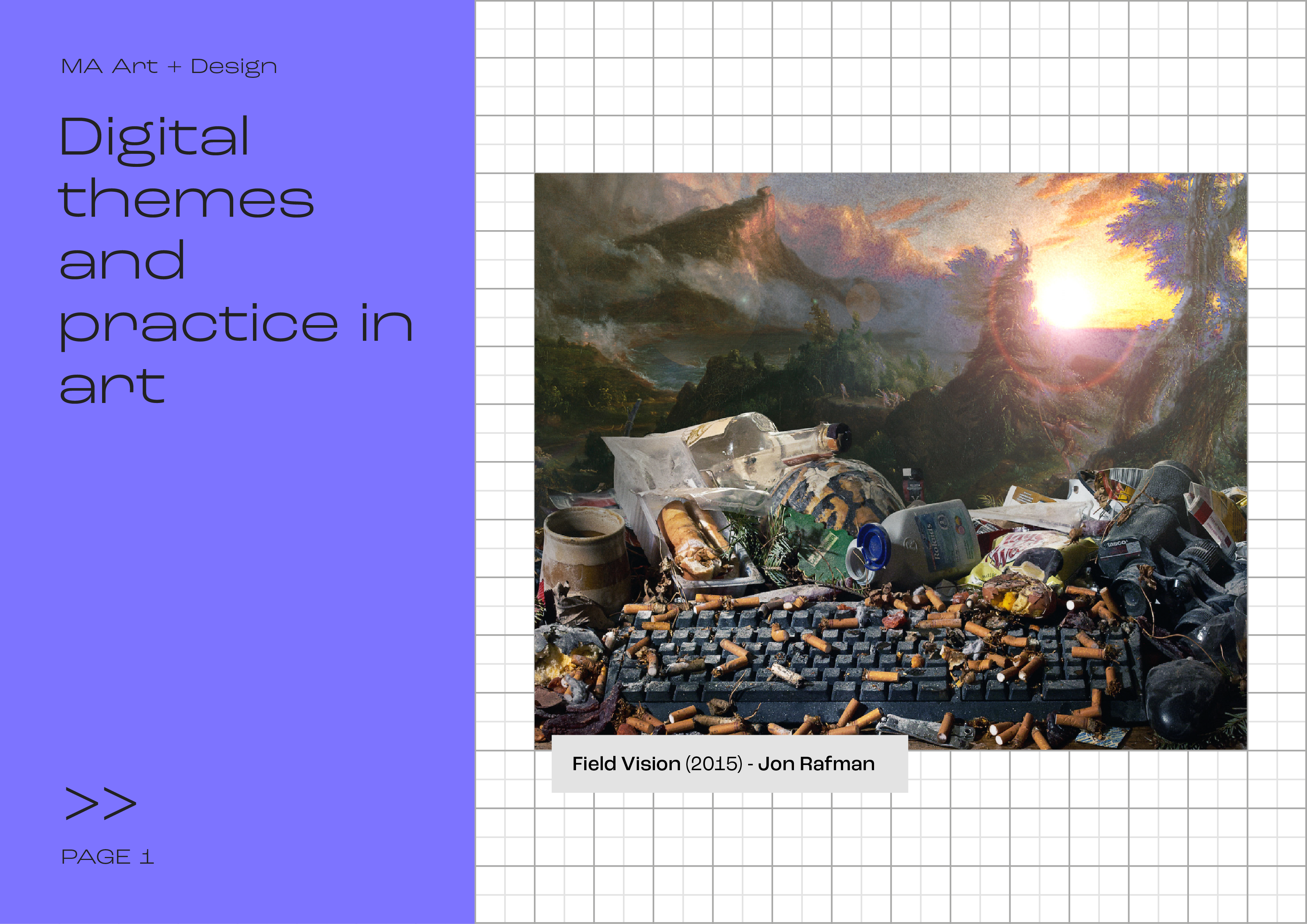
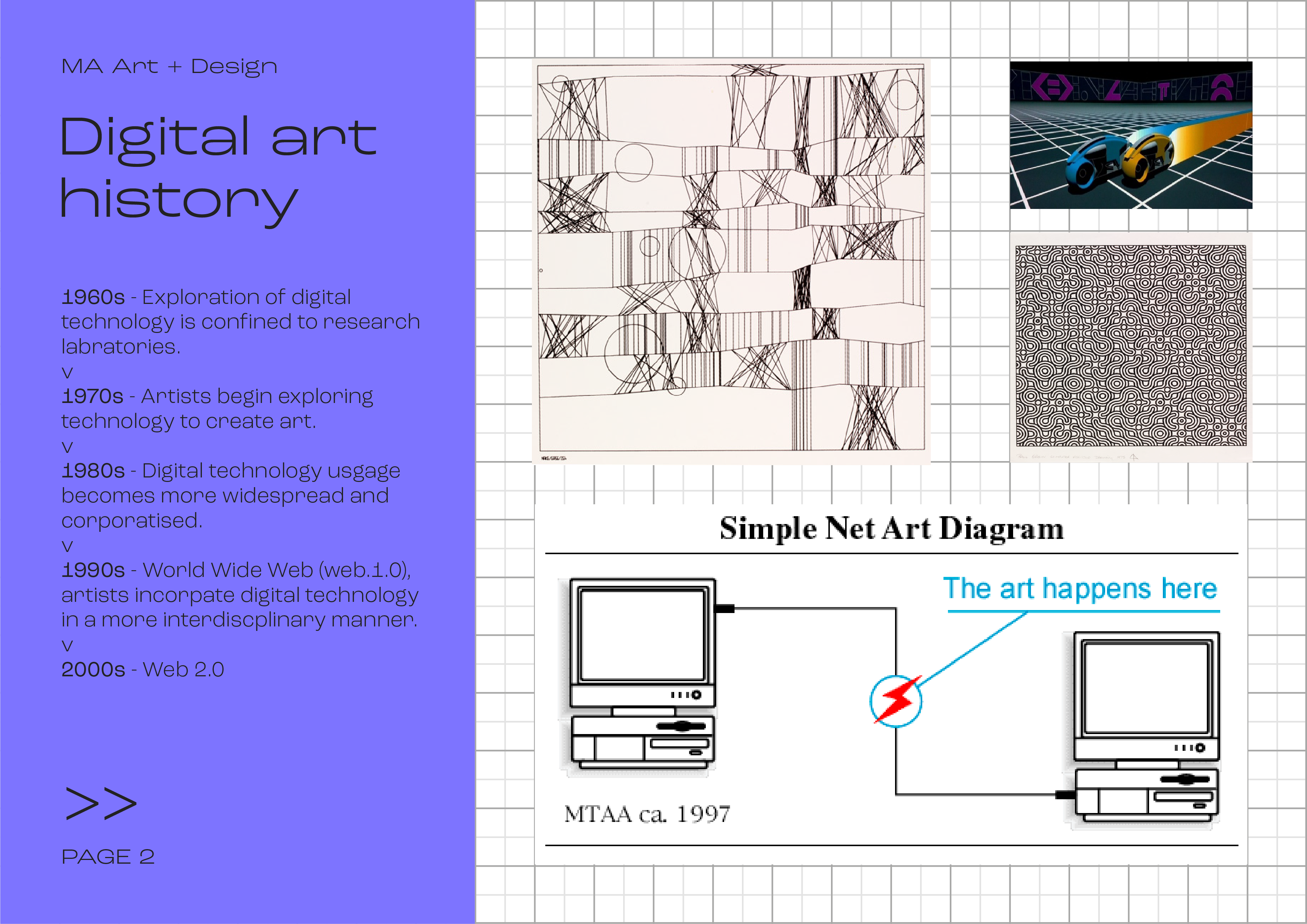
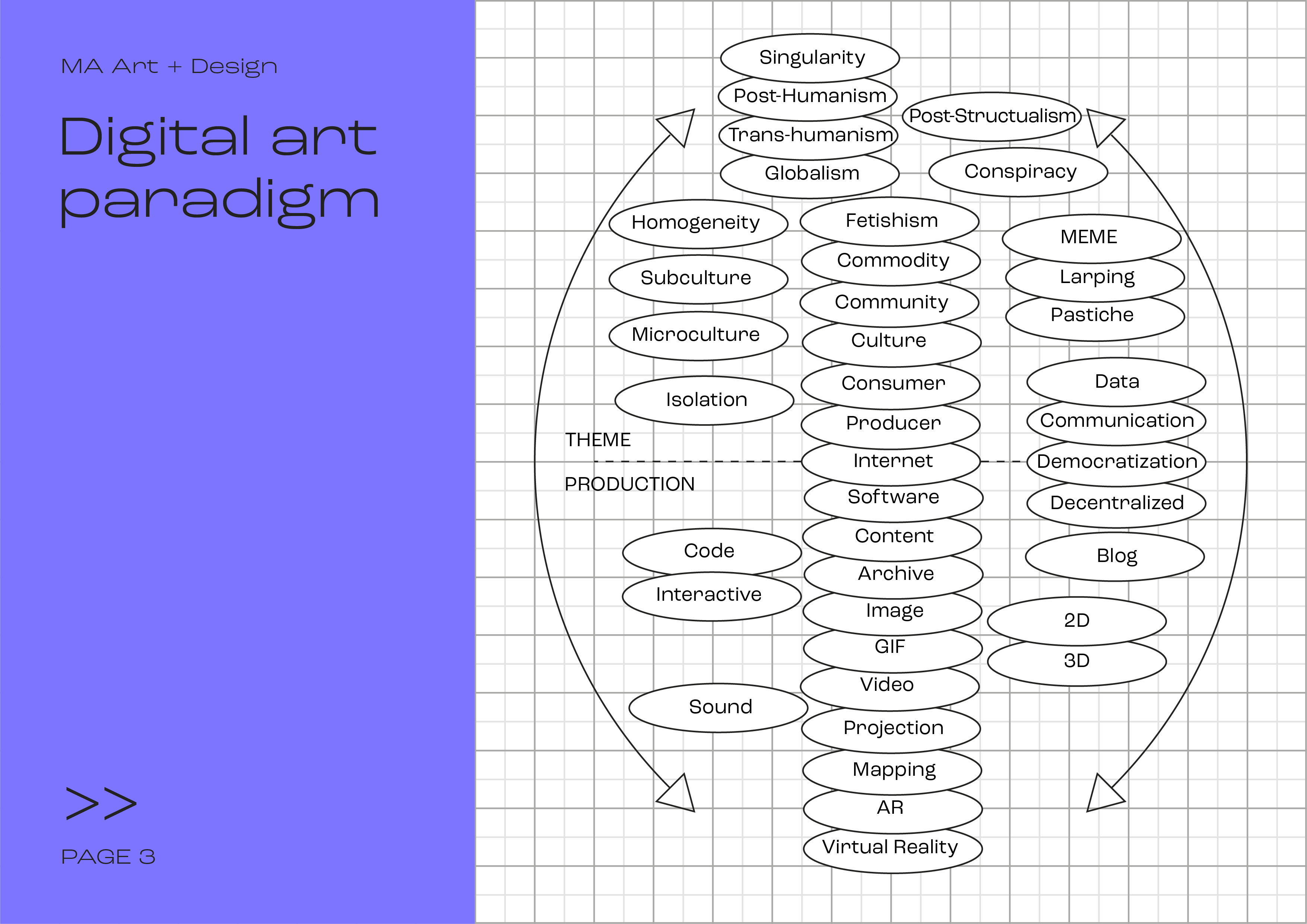
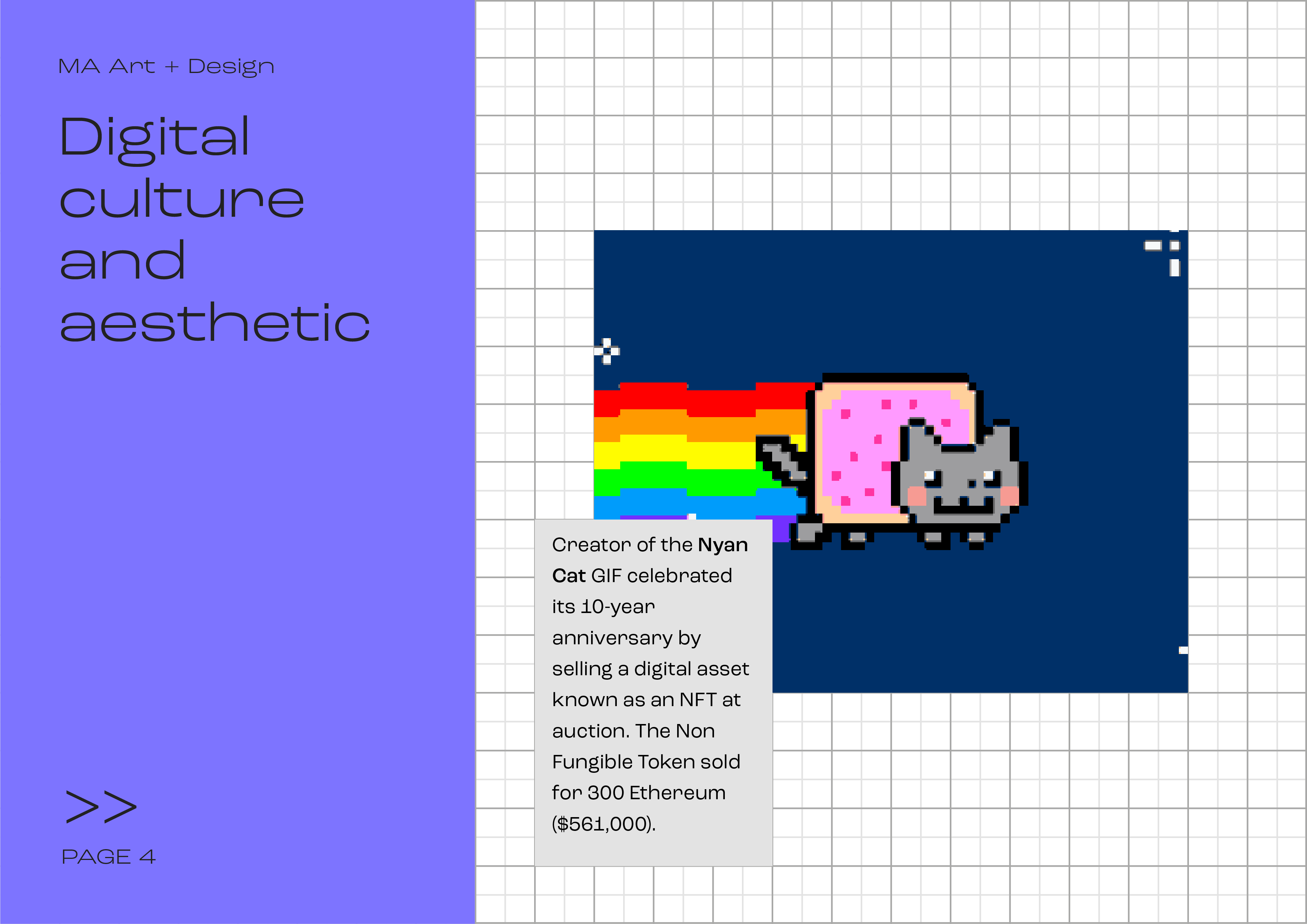

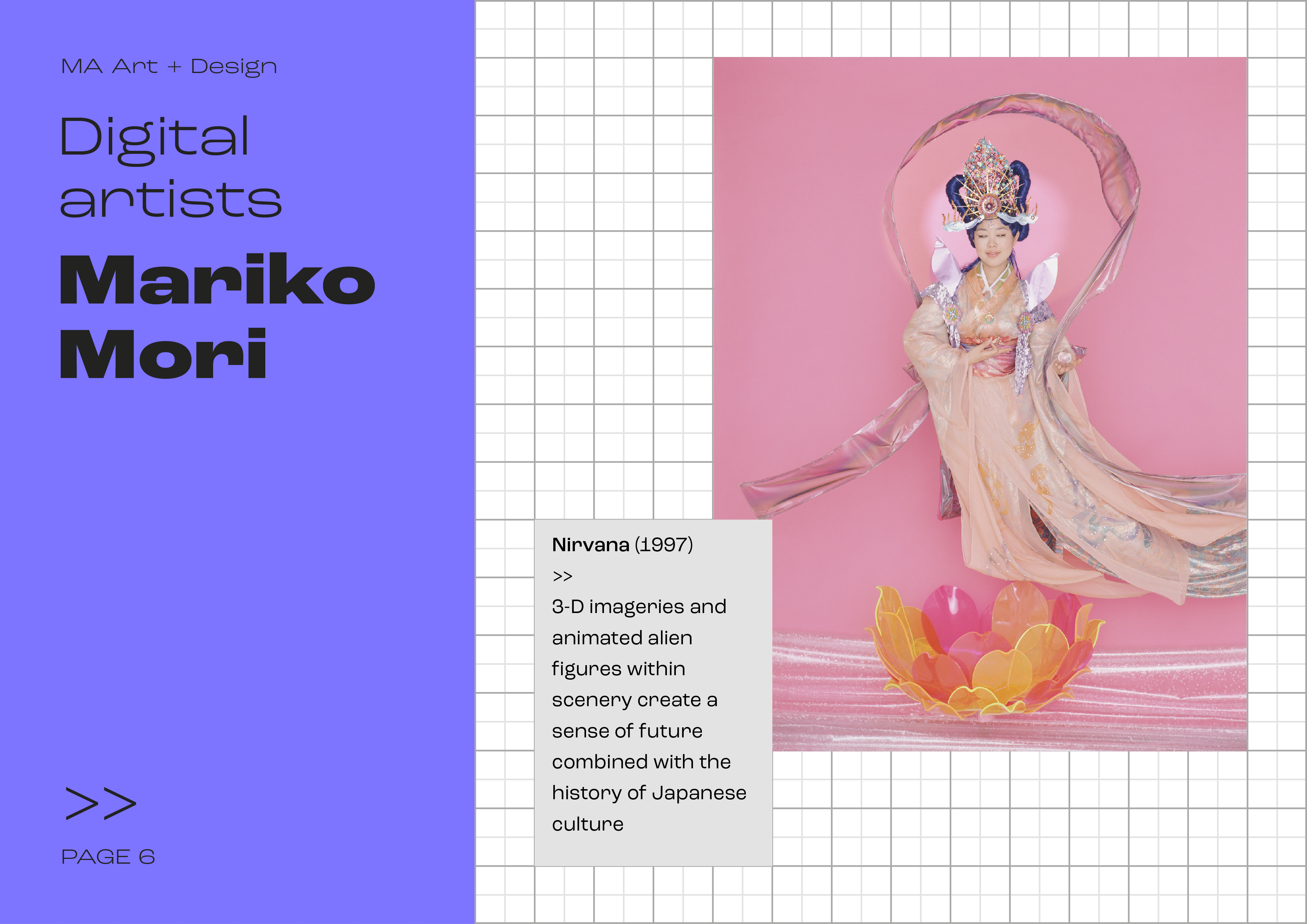

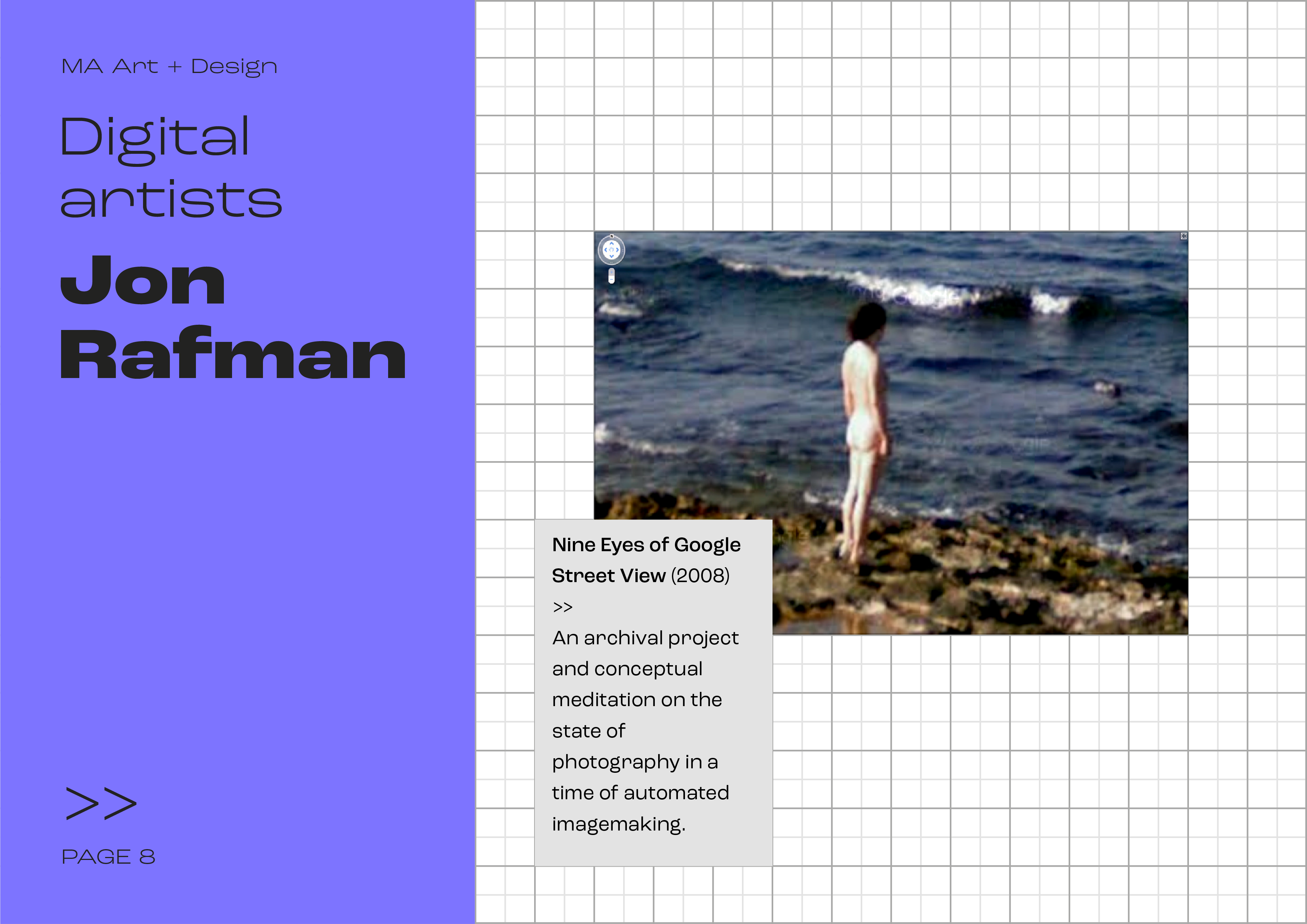
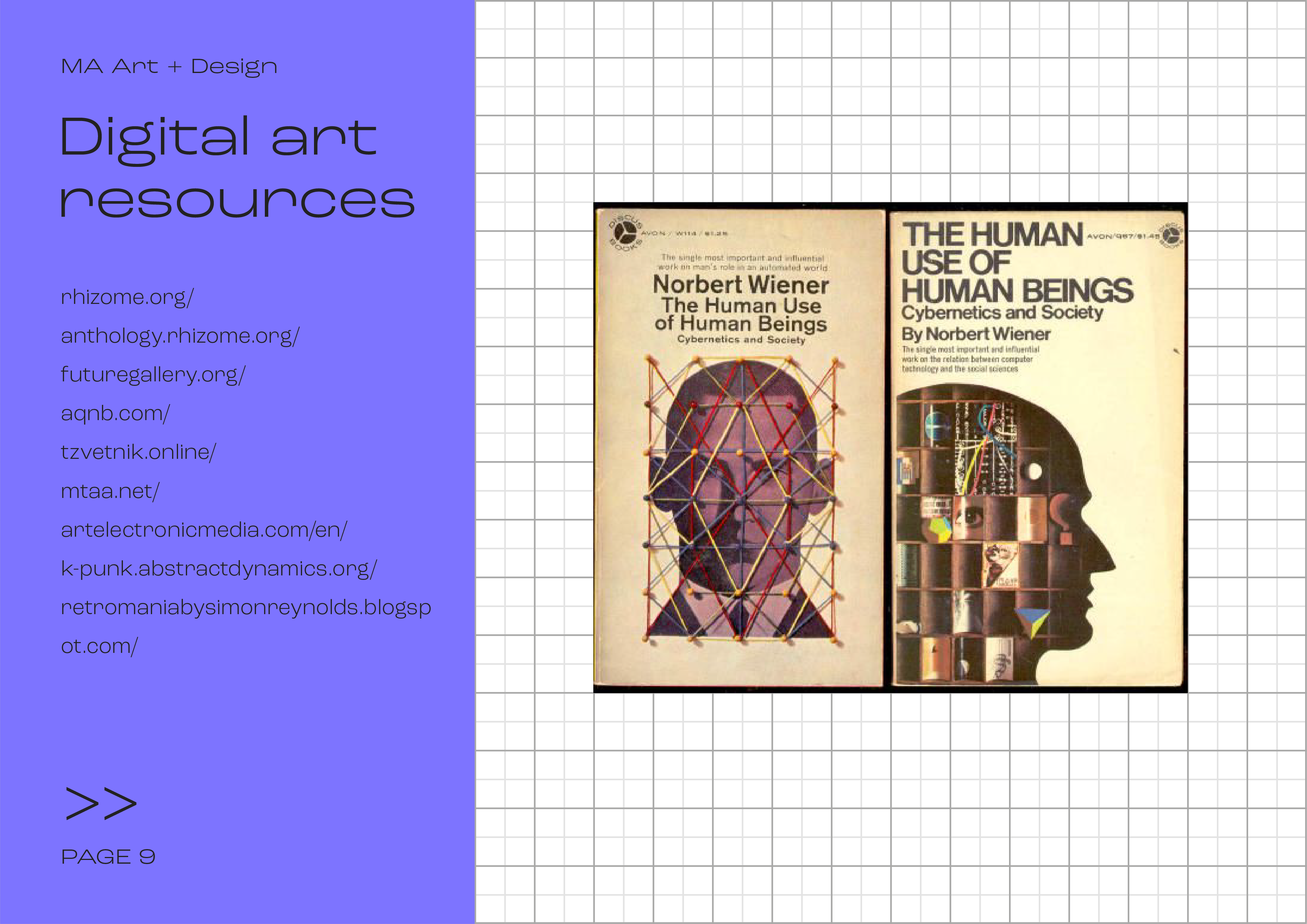
SEMINAR 10
Rachel Grant
Communities, Politics and Industrial Transformation from a Curatorial Perspective
Communities, Politics and Industrial Transformation from a Curatorial Perspective
Content
In this seminar Rachel gave a talk on oil and its cultural and social impacts on Aberdeen as a community. She also spoke about her work within communities to re-imagine their local areas. Aberdeen has been completely reliant on the oil trade for its wealth and has often suffered in other ways because of it. Because of the once high wages, for some, in Aberdeen the amount of government funding the city council receives is far below that of the other local authorities across Scotland, meaning Aberdeen has had less money to develop its infrastructure both commercial and social. the economic crash of 2008 was buttressed by Aberdeen’s micro economy but in recent years of downturn in the oil industry has meant Aberdeen’s collapse has only just been fully realised. The work of individuals and groups dedicated to creating growth for Aberdeen is more crucial than ever.
For this Seminar I read Cara Dagget’s, Petro – masculinity: Fossil fuels and Authoritarian Desire’ (2018), which I agreed with on some points and not others. I agree that the oil trade is destructive not only of the environment but also of countries, particularly ones within the middle east. I personally don’t agree with the analogy of attributing masculinity as an inherent trait of the evils of oil production. I often find these kinds of analysis divisive in a way that isn’t constructive but rather alienating and ignores the subjugation of all peoples both masculine and feminine by these exploitative trades.
Personal Reflection
Community action is something I have become increasingly interested in, I have hoped to start an organisation that helps build and contribute to the cultural development of Aberdeen post oil industry.
Rachel asked that we think of and then share an example of art that challenged and critiqued systems of power. I chose to discuss the Situationist Internationale collective and their seminal manifesto (1960). My reasoning for choosing this particular text is because of its acute critique of capitalism, art and society. Their criticism encompasses the political, cultural and economic conditions of that time, and even still continues to be relevant to our present situation.
I believe in order for an artist or designer to effective in their commentary they have to be ground in an accurate evaluation of not only themselves but more importantly the totality of circumstances they reside in. I think the Situationists were effective in this, thus allowing them to better critique the financial establishment and the conditions it creates for art. The importance of these factors being the greater ability for effective action, resulting in real change or restructuring.
In this seminar Rachel gave a talk on oil and its cultural and social impacts on Aberdeen as a community. She also spoke about her work within communities to re-imagine their local areas. Aberdeen has been completely reliant on the oil trade for its wealth and has often suffered in other ways because of it. Because of the once high wages, for some, in Aberdeen the amount of government funding the city council receives is far below that of the other local authorities across Scotland, meaning Aberdeen has had less money to develop its infrastructure both commercial and social. the economic crash of 2008 was buttressed by Aberdeen’s micro economy but in recent years of downturn in the oil industry has meant Aberdeen’s collapse has only just been fully realised. The work of individuals and groups dedicated to creating growth for Aberdeen is more crucial than ever.
For this Seminar I read Cara Dagget’s, Petro – masculinity: Fossil fuels and Authoritarian Desire’ (2018), which I agreed with on some points and not others. I agree that the oil trade is destructive not only of the environment but also of countries, particularly ones within the middle east. I personally don’t agree with the analogy of attributing masculinity as an inherent trait of the evils of oil production. I often find these kinds of analysis divisive in a way that isn’t constructive but rather alienating and ignores the subjugation of all peoples both masculine and feminine by these exploitative trades.
Personal Reflection
Community action is something I have become increasingly interested in, I have hoped to start an organisation that helps build and contribute to the cultural development of Aberdeen post oil industry.
Rachel asked that we think of and then share an example of art that challenged and critiqued systems of power. I chose to discuss the Situationist Internationale collective and their seminal manifesto (1960). My reasoning for choosing this particular text is because of its acute critique of capitalism, art and society. Their criticism encompasses the political, cultural and economic conditions of that time, and even still continues to be relevant to our present situation.
I believe in order for an artist or designer to effective in their commentary they have to be ground in an accurate evaluation of not only themselves but more importantly the totality of circumstances they reside in. I think the Situationists were effective in this, thus allowing them to better critique the financial establishment and the conditions it creates for art. The importance of these factors being the greater ability for effective action, resulting in real change or restructuring.
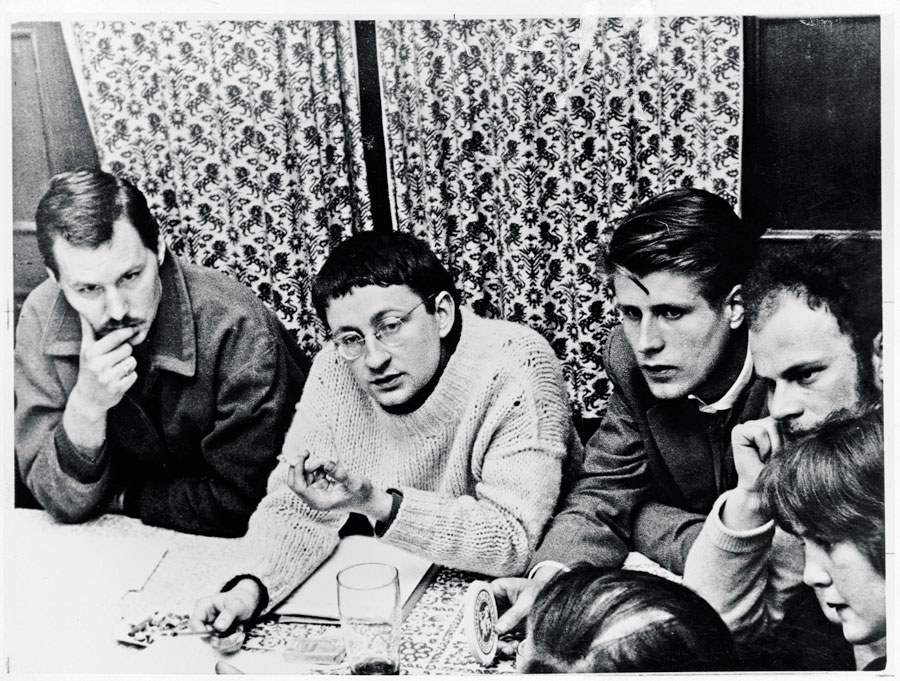
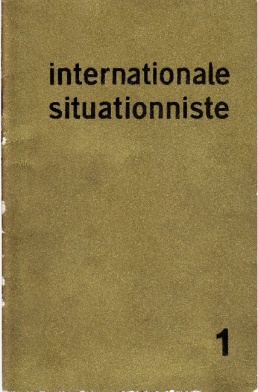
SEMINAR 11
Jonathan Baxter
Seeing with both eyes, in depth and colour, without shying away from reality
Seeing with both eyes, in depth and colour, without shying away from reality
Content
In preparation for this seminar Johnathan asked us to consider an “Ennobling Question” and think of some that may help us not only understand our practice more clearly but also help us reflect on ourselves in relation to our environment.
I started with asking myself “how can I become a better designer?” then progressing to “how can my work or how can I contribute to supporting my community? In a way that counters communal decline? Is this truly possible through art or design?”
Personal Reflection
I am still not sure if I have the answers to these questions, but I certainly believe that posing the question is in part a way of getting closer to any potential solution. I also believe it is useful to come from a position of not knowing through questioning, this is a much more effective mode of investigation both internally and externally.
I found this exercise especially effective in speaking with my peers and learning more about them, I was paired with Julia and Elodie in the breakout session. We all had to establish the why, how, where and considerations over materials and our individual futures. Through questioning these grounds with each other, certain themes became apparent and linked components of each of our practices. These themes included the circular economy, geopolitics and sustainability. Whilst all approaching making somewhat differently, the ideas that drove us all as persons could be relatable, thus highlighting the importance for critical and collective questioning. Without this we may not have so easily established this common ground.
In preparation for this seminar Johnathan asked us to consider an “Ennobling Question” and think of some that may help us not only understand our practice more clearly but also help us reflect on ourselves in relation to our environment.
I started with asking myself “how can I become a better designer?” then progressing to “how can my work or how can I contribute to supporting my community? In a way that counters communal decline? Is this truly possible through art or design?”
Personal Reflection
I am still not sure if I have the answers to these questions, but I certainly believe that posing the question is in part a way of getting closer to any potential solution. I also believe it is useful to come from a position of not knowing through questioning, this is a much more effective mode of investigation both internally and externally.
I found this exercise especially effective in speaking with my peers and learning more about them, I was paired with Julia and Elodie in the breakout session. We all had to establish the why, how, where and considerations over materials and our individual futures. Through questioning these grounds with each other, certain themes became apparent and linked components of each of our practices. These themes included the circular economy, geopolitics and sustainability. Whilst all approaching making somewhat differently, the ideas that drove us all as persons could be relatable, thus highlighting the importance for critical and collective questioning. Without this we may not have so easily established this common ground.
SEMINAR 12
Charlie Hackett
Asking Questions of Public Spaces: Unconventional Visual Narratives and Story telling
Asking Questions of Public Spaces: Unconventional Visual Narratives and Story telling
Content
IIn this seminar Charlie Hackett shared his personal practice with us. His practice combined research with participatory action. His participatory practice often involved specific a demographic from the public, examples would include, drug users, children, social class groups.
In preparation for this seminar Charlie requested that we choose a text from his given reading list, I chose Charlie Hackett’s own piece, Transferable Skills and the Drug Dependent. In this essay he reframes the shameful activities of the drug user as potentially behaviours of a high agency individual. He questions the stigmatisation of everything associated with being a drug user and speculates a more positive outlook for these individuals.
Personal Reflection
I found this seminar interesting as it made me reflect on contemporary notions of private and public, lines that are increasingly inverted or displaced.
This particular seminar reminded me of Mark Fischer’s writing, which is a good insight into understanding class confidence and its relationship to power. In Mark Fischer’s essay Good for nothing he laments his adolescence as a period of intermittent depression that has continued with him to adulthood. He ascribes the root of his long struggle with mental health as being a result of an imposter syndrome brought on by the social and economic climate, rather than internal biological imbalances.
He criticises the view of mental health as a private issue, he instead believes it is a public issue that is a social symptom of capitalism and its presiding ideology, neoliberalism. Every person is valued only as a unit of capital. This essay is a good insight into understanding class confidence and its relationship to power.
IIn this seminar Charlie Hackett shared his personal practice with us. His practice combined research with participatory action. His participatory practice often involved specific a demographic from the public, examples would include, drug users, children, social class groups.
In preparation for this seminar Charlie requested that we choose a text from his given reading list, I chose Charlie Hackett’s own piece, Transferable Skills and the Drug Dependent. In this essay he reframes the shameful activities of the drug user as potentially behaviours of a high agency individual. He questions the stigmatisation of everything associated with being a drug user and speculates a more positive outlook for these individuals.
Personal Reflection
I found this seminar interesting as it made me reflect on contemporary notions of private and public, lines that are increasingly inverted or displaced.
This particular seminar reminded me of Mark Fischer’s writing, which is a good insight into understanding class confidence and its relationship to power. In Mark Fischer’s essay Good for nothing he laments his adolescence as a period of intermittent depression that has continued with him to adulthood. He ascribes the root of his long struggle with mental health as being a result of an imposter syndrome brought on by the social and economic climate, rather than internal biological imbalances.
He criticises the view of mental health as a private issue, he instead believes it is a public issue that is a social symptom of capitalism and its presiding ideology, neoliberalism. Every person is valued only as a unit of capital. This essay is a good insight into understanding class confidence and its relationship to power.
